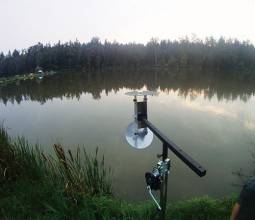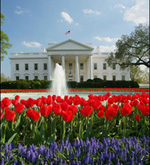First, let’s review the record of presidential leadership in GPS.
In 1983, following the shooting down of an errant Korean airliner over Soviet airspace, President Ronald Reagan ordered the U.S. Air Force to make GPS available for civilian use so that such navigational errors could be avoided in the future.
George H. W. Bush was commander in chief in 1991 during the first Persian Gulf when GPS helped coalition troops throw the so-called “left hook” by navigating through the desert around entrenched Iraqi troops in Kuwait.
First, let’s review the record of presidential leadership in GPS.
In 1983, following the shooting down of an errant Korean airliner over Soviet airspace, President Ronald Reagan ordered the U.S. Air Force to make GPS available for civilian use so that such navigational errors could be avoided in the future.
George H. W. Bush was commander in chief in 1991 during the first Persian Gulf when GPS helped coalition troops throw the so-called “left hook” by navigating through the desert around entrenched Iraqi troops in Kuwait.
Bill Clinton, of course, issued the first presidential policy on GPS in 1996, and his technology-savvy vice-president, Al Gore, was the administration’s advocate for new civil GPS signals.
Then in 2004 George W. Bush expanded presidential policy into a 2004 national security directive on space-based positioning, navigation, and timing.
And the record of the present White House occupant to preserve and protect the GPS resource?
So far, President Barack Obama has touted GPS as a sign of American technological prowess while suggesting, in last year’s National Space Policy document, that the nation look to foreign GNSS systems to make GPS more resilient.
Then, of course, there is the matter of LightSquared Subsidiary’s plan — now before the Federal Communications Commission (FCC) — to wholesale a high-powered wireless broadband service using a dense terrestrial network transmitting on frequencies adjacent to the GPS L1 signals.
Tests conducted earlier this year by a technical working group set up under the conditional FCC order directing LightSquared to proceed with its plan clearly showed widespread interference to most GPS receivers in frequencies nearer to GPS. A limited set of tests conducted late in the process showed interference to high-precision wideband receivers from transmissions further away from GPS L1.
Civil and military officials responsible for ensuring the well-being of GPS have expressed urgent concerns over the LightSquared plans, apparently with limited effect. They recommended that the broadband system’s transmitters should use a more distant frequency or, at least, the FCC require a new round of tests for the lower 10-megahertz of spectrum on which LightSquared now says it will broadcast.
In light of these facts, common sense and due diligence would seem to call for holding off on rolling out LightSquared’s system until further tests can be conducted. But then due diligence would have suggested a more thorough investigation of the company’s plans by its leaders, investors, and the FCC before letting it get this far down the road.
Although the process is nominally in the hands of the agency’s International Bureau, FCC Chairman Julius Genachowski appears to be managing the process there, backed by the close scrutiny and guidance of the White House.
We know all too well the swamp of unseemly relationships between campaign contributors and political appointments, and between regulators and the regulated companies at which they later become employed.
Before his apppointment, Genachowski had been a friend of the president’s since their Harvard Law School days and served as a “bundler” of contributions during Obama’s 2008 presidential campaign.
The chairman also has a business background in both broadcast and venture capital; so, the ambitions of Phil Falcone, who controls the Harbinger Capital fund that is the primary backer of LightSquared, might well resonate with him. As must the contributions that Falcone and LightSquared corporate leaders have made to Obama’s re-election campaign.
Unlike many other nations, notably China, U.S. politics have rarely drawn leaders with strong backgrounds in science or technology.
So, perhaps we should not expect our political leaders to immediately grasp the details of the complex physics behind an issue like LightSquared’s interference to GPS. But no one should have to tutor them in the difference between politics and good policy, between business interests and national interests, or between political engineering and real engineering.





